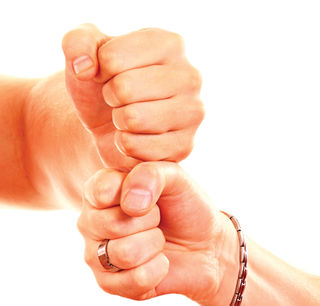"Hi" Is Mighty
A new book explores the origins of our greetings.
By Shira Polan published March 1, 2018 - last reviewed on May 1, 2018

A greeting can take many forms: You might bump fists in America, kiss feet in Bangladesh, or rub noses if you're a Mãori. While the specifics vary, greetings "show more about what's common in our psychology than what's different," says British historian and diplomat Andy Scott. His book One Kiss or Two? explores the origins and purposes of our hellos.
Trust
Greetings that include an element of vulnerability—play wrestling, friendly jabs on the shoulder, or the custom once attributed to the Walbiri tribe in Australia of holding each others' genitals—can be seen as ways of showing that participants can be trusted. "One of the main functions of the greeting, especially between strangers, is to build trust," says Scott. For that reason, he explains, greetings that upset local norms can have outsize consequences.
Status
As when wolves show their necks or chimpanzees lower their heads in the company of dominant males, some of our greetings serve to "show that we recognize each other as social entities," Scott says. Bowing is a major example in Asia and was once more common in the West. In Japan, he notes, when two people greet, the lower-status person is expected to bow longer and more deeply.
Connection
Our chimp relatives often wrap their bodies around each other and touch lips to greet—which hints at the deep roots of our salutatory hugs and kisses. The intensity with which chimps greet each other reflects how long they have been apart, explains Scott, who cites primatologists Jane Goodall and Frans de Waal. Chimps also kiss when resetting relations after a fight.
